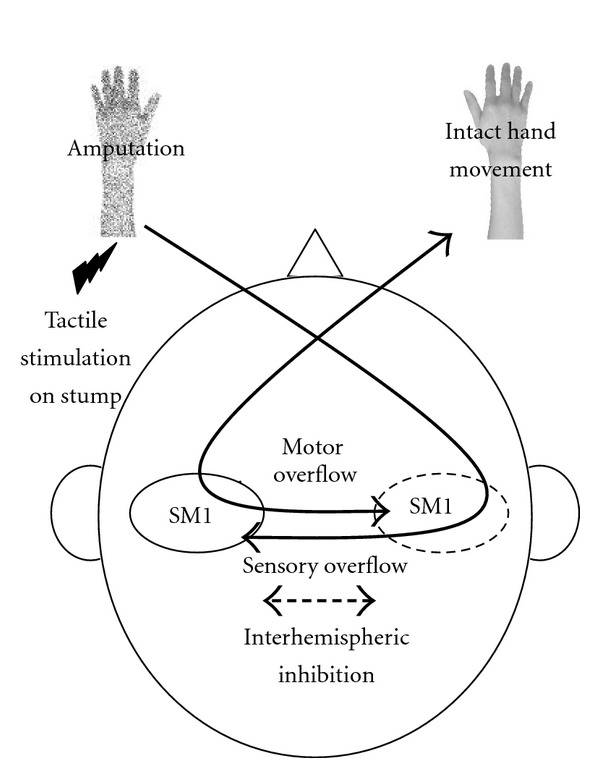Figure 2.

Amputation alters the interhemispheric interactions through the corpus callosum and induces bilateral neural activity. After amputation, reorganization of the deafferented sensorimotor cortex (SM1) occurs due to the absence of an afferent input from the missing hand. This change leads to an imbalance between the hemispheres in patients with amputations. Moreover, experience-dependent changes in representation by overuse of the intact hand increase this imbalance between the hemispheres. The imbalance between the hemispheres alters the interhemispheric interactions through the corpus callosum. In particular, the reduced interhemispheric inhibition observed in patients with amputations induces the neural activation of both hemispheres due to the failed inhibition of the opposite hemisphere. When tactile stimulation is delivered to the stump of the amputated limb, the overflow of the afferent information induces the activation of the nondeafferented SM1. In addition to the sensory system, the motor overflow increases the activity of the deafferented SM1 during the movement of the intact hand.
